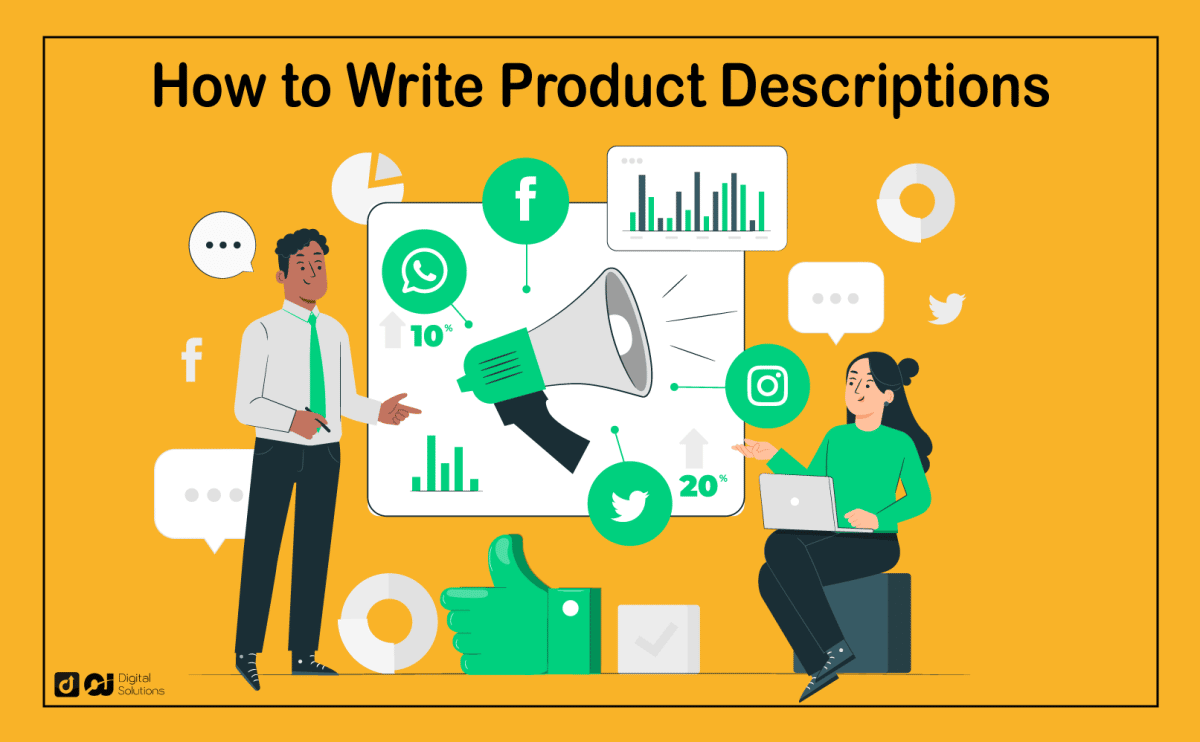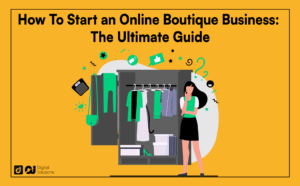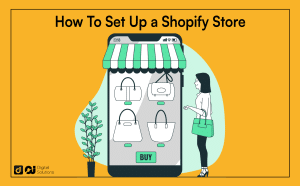Writing informative and persuasive product descriptions is key to converting your target audience into paying customers.
If you want to master product description writing, you’ve come to the right place.
I’ve found success with my own ecommerce business, and I’ve written countless product descriptions.
I want to help other sellers like you succeed, so I wrote this guide to teach you how to write product descriptions that sell in nine steps.
Let’s begin.
How To Write Product Descriptions That Sell in 9 Steps
Follow these nine steps for writing product descriptions that can help boost your sales.
1. Start With a Product Description Template

You can use many fantastic product description templates to create compelling copy. Expert copywriters have tried and tested these templates and achieved stellar results. Use templates to begin making more masterful product descriptions.
However, developing the best product description isn’t a one-step process. There is no single ideal way to write content that automatically brings sales without customization or contextualization.
Take one great example for product descriptions and rework it to fit the context of your product. Make the product description original by injecting your brand voice and personality.
2. Build Buyer Personas.

Buyer personas are fictional avatars you create to illustrate your potential customers (not just any person). They help identify and target specific customers so you can tailor your content to drive purchases.
The key to creating compelling product descriptions is knowing your target audience. People are motivated by different things.
For example, selling clothing to a homemaker differs greatly from selling to a working woman. When selling to these two groups, you should have specific product descriptions for each group.
Assign names to your personas that will give you a general idea of what you do. Typically, a description summarizing a buyer persona’s life stage and personality precedes the persona’s avatar name.
Some examples of a good buyer persona are “Yuppie Yasmin” or “Finance Exec Finn.”
A good buyer persona includes the following information:
- A person’s job
- Income level
- Gender
- Age range
- Aspirations
- Problems
- Priorities
- Media consumption
- Habits
- And so on
The first step to writing high-converting product descriptions is clarifying your buyer personas. When you know who you’re writing to, you can appeal to their specific aspirations, problems, and goals.
If you’re looking for a great tool to help you create buyer personas, start with HubSpot’s free persona creator tool.
3. Identify and Fix Your Target Buyer’s Pain Points.

One compelling strategy the best copywriters and ecommerce business owners use when crafting a product description is identifying and fixing a buyer’s pain point. It’s a selling tactic that drives more traffic and catches people’s attention immediately.
People don’t buy products—they purchase solutions.
Think about this: People don’t buy slimming tea if it doesn’t provide weight loss. They won’t buy a planner if it doesn’t help them organize their lives.
Here are some product descriptions that identify and fix a pain point.
- Have you lost valuable time because of slow internet in the past? Has it caused stress for you when you’re working?
- Picture this: You’re preparing a Thanksgiving dinner for your family and friends. You’re exhausted after spending hours cooking, and the family wants to go out to the parade, but you have to stay home and do the dishes!
- Have you read finance book after finance book only to close the last chapter feeling more confused than before? We’ve all been there—piling up information that hurts your head, but you don’t feel like you can apply any of it!
Try creating a few product description examples that identify and fix your buyer persona’s pain points.
Place these text snippets at the beginning of your product descriptions to get your visitors hooked on your product copy.
4. Provide All the Necessary Details.

10% of eCommerce sites have product descriptions that don’t contain enough information. Your product pages should have descriptions that give all the details potential buyers might need to make an informed purchase.
Your product descriptions are supposed to inform and influence simultaneously. Writing product descriptions with thorough information can be the key to driving more sales to your online store.
Here are the key product details you should include in your product descriptions:
- Product dimensions or measurements
- Key features
- Materials used
- Other necessary technical details
- Shipping information
- Other supplemental info that applies to your product
- Any other details buyers may ask before buying
Writing the above details in bullet points is ideal for increasing the readability of your product descriptions.
You should also include a short product description FAQ that lists all your past customers’ top questions.
5. Highlight Your Product’s Benefits.

Telling your potential buyer about the product quality, product details, and product features isn’t enough.
Consumers don’t buy products because of features; they buy them for benefits.
Adding product benefits makes product descriptions more persuasive and lets you stand out from the competition.
If you have the same product as a competitor, you can position your product as the better option by highlighting benefits not in your competitor’s descriptions.
Here’s a great product description example that showcases key benefits:
With our vegan lip tints, you will:
- Have amazing lips that bring more color and life to your look!
- Get a product that’s responsible and safe for your skin
- Have no guilt when you doll up for another night out with your friends!
- Become a part of a movement giving women a safer alternative to beauty products.
Writing your benefits in bullet points makes them easy for people to read. Have at least one list of benefits your customers will enjoy when they buy and use your products.
Adding one compelling product benefit to your page titles can also help increase your click-through rate.
6. Optimize Your Descriptions.

SEO-optimize your product descriptions to increase your organic search rankings and product visibility.
Add specific keywords to your product titles and descriptions to optimize for search engines, appear higher on search results, and get more traffic to your product pages.
Conduct keyword research to determine the terms your target audience uses when searching for products on your marketplace. Using the appropriate keyword research tools is also essential.
For example, using the best Amazon keyword research tools can help with search engine optimization if you’re an Amazon seller.
Regardless of the type of product you sell, tools like Helium10 and ZonGuru can help you find and use the best keywords for your Amazon product descriptions.
If you’re an Amazon seller with a limited budget, SellerApp has a free plan. However, this plan lacks many helpful features.
I recommend paying for a keyword research tool if you can afford it. When used correctly, the sales it can bring outweigh its costs.
7. Tell Stories.

Another way to write persuasive product descriptions is to craft stories. When a brand tells a story, 55% of people are likelier to buy in the future, and 15% will be happy to purchase immediately.
Writing your product’s story is a great way to connect with your target audience on a more personal level.
Here are some stories to tell in your product descriptions include:
- The problem that pushed you to create or sell your product
- How you started
- Your success stories or that of customers
- The vision for your product
Pairing your story with high-quality product images can also be a great way to help people visualize the journey. Many ecommerce store builders allow you to insert photos in the description, so maximize that.
8. Add Social Proof.

66% of potential buyers say they will likely purchase a product with positive reviews. Don’t miss out on the opportunity to maximize product reviews and customer feedback to beef up your product description.
Your product page will most likely already have a reviews section. Use a specific product description to highlight your top three or four testimonials. Choose the ones with the most impactful testimonies or those from prominent people.
Include reviews highlighting any product feature that makes your product unique.
9. Spell Check Your Work.

Bad spelling isn’t the end of the world, and the occasional typo won’t kill your business.
However, it pays to be extra careful with spelling to ensure quality product descriptions.
You also have access to great tools for checking spelling and grammar. I love Grammarly because its artificial intelligence makes it one of the most reliable grammar and spelling checkers. You can start with a free plan and upgrade to a paid one if you need more advanced checking.
Don’t forget to spell-check your product titles. Those are the first things people will see when they visit your website, so they should be flawless.
4 Additional Tips To Write Effective Product Descriptions
Apply these tips to transform basic descriptions into product descriptions that sell.
1. Use Casual Language.
Communicate with your customers how people communicate with their friends or family members. Keep it light and casual.
Using casual language in your product descriptions and marketing copy has the following benefits:
- It makes your product descriptions much easier to understand.
- It makes your product descriptions more engaging.
- It builds rapport and fosters familiarity with potential customers.
Here’s how to write product descriptions using casual language.
- Use simple, everyday words.
- Employ a conversational, friendly tone.
- Write short sentences and short paragraphs.
- Address your potential customer or target buyer directly with you and your pronouns.
- Use contractions to avoid sounding robotic (You’re instead of You are).
2. Be Funny.
Most customers appreciate humor, regardless of the type of content they consume. It’s why funny videos on TikTok and Instagram go viral easily.
Use humor to your advantage. Injecting humor into your product descriptions is an effective way to engage with potential customers. Humor is also an excellent way to show your brand’s uniqueness, quirkiness, and personality.
However, humor doesn’t apply to all products, so use it only if it makes sense for your brand and products.
3. Use Sensory Words.
Online shoppers can’t touch, smell, or taste your products.
Using sensory language in your product description increases engagement and lets customers imagine how your product feels, smells, or tastes.
If you sell coffee beans online, potential customers who’ve never bought anything from your store wouldn’t have a single idea how your coffee beans taste—unless you describe them with sensory words.
For example, imagine you’re selling coffee beans from Central America, which tend to have light and fruit-forward flavors. Here are some sensory words you can use in your product description, depending on the coffee beans’ actual flavor profile:
- Fruity
- Citrusy
- Berrylike
- Sweet
- Bright
Besides these sensory words, many coffee roasters or coffee bean sellers often use actual fruits and other food to describe the specific flavor profile of the coffee beans.
Example:
This coffee has notes of:
- Cherry
- Chocolate
- Almonds
4. Add High-Quality Images
Similar to the point I made above, potential buyers can’t see and inspect your products in person.
The next best thing is to showcase your products using high-quality images.
Here are some tips when adding high-quality images to your product descriptions.
- Follow your platform or marketplace’s product image guidelines for sellers (if you don’t have your own ecommerce site or storefront).
- Upload clear, crisp, and well-lit product images.
- Show your products from multiple angles.
Note: If you’re an Amazon seller, search for any product from popular brands and you’ll see that they often add 360-degree product images, letting potential buyers see the product from all angels.
- If your platform allows it, upload short, high-quality videos with people using the product.
If you have a good eye for details and a smartphone with a high-quality camera, you can take and upload product images yourself. Otherwise, you may need to hire a professional product photographer.
Why Writing Product Descriptions Is Important

The product description is the text part of your product pages. It gives people more information about your product to convince them to buy.
How you write a product description can make or break your online store.
You can get more results and create a successful online business by writing compelling product descriptions. If you can’t, you’ll struggle to achieve your goals.
The first step in crafting great product descriptions is understanding the purpose of product descriptions for your target audience.
You know it’s there for you to sell, but what do your website visitors get out of it? Product descriptions should always do two things: inform and influence.
Inform
Product descriptions inform potential buyers by giving them all the details they need to make a purchase decision. Product descriptions should always have the following information:
- Product features
- Ingredients or materials
- Technical details
- Product attributes (dimensions, weight, etc.)
- Terms and conditions
- Shipping details
- And so on
The more thorough you are about information, the more likely someone will purchase the item. People need relevant information before buying any product, so giving them what they need increases the likelihood of making a sale.
Here’s an example.
Say you’re selling t-shirts but don’t provide information on shirt sizes (including actual measurements), material, and print size in the product description. Your ideal customer can’t be sure about your product and just exits your store without buying.
Influence
Your product description must also influence or convince your customer to buy.
You can influence customers by writing enticing product descriptions that use power words, persuasive language, social proof, and other marketing tactics that turn target customers into actual buyers.
That means learning to craft product copy that builds a sense of preference, desire, and urgency in your buyers.
The Bottom Line
Product description writing goes beyond just using certain words to entice visitors to buy.
Learning to write great product descriptions involves understanding who you’re writing to and creating content for them.
Don’t be afraid to use the tips I outlined in my article to improve your product descriptions. You can also use infographics and product descriptions for the best results.






